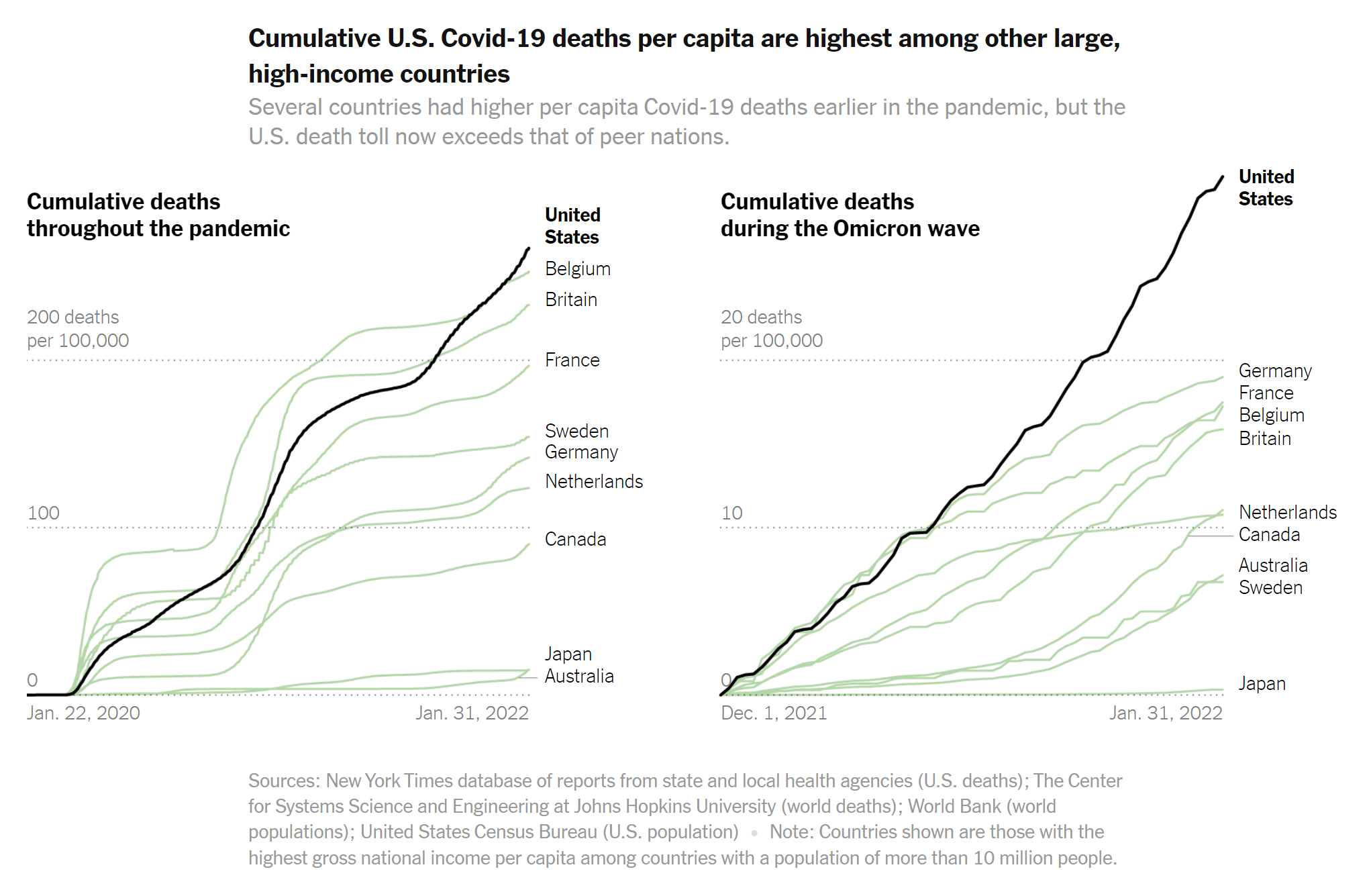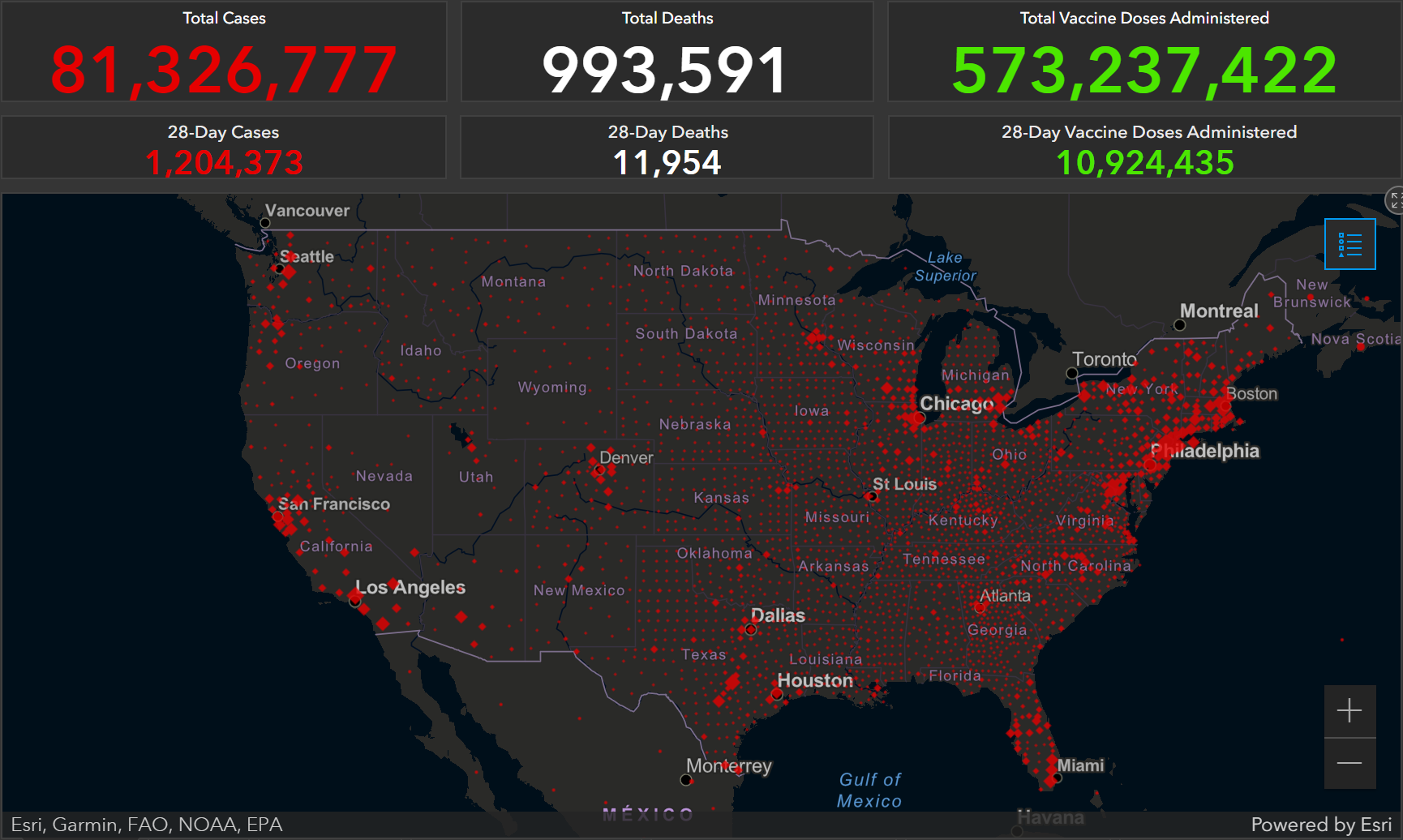We weren’t supposed to get anywhere near 1 million COVID deaths in the U.S. Then we did.

By Nicholas Goldberg
18 April 2022
(Los Angeles Times) – At the start of the pandemic, in late March 2020, President Trump held a White House briefing at which his top advisors presented their official COVID-19 death projections. In somber tones, they forecasted that between 100,000 and 240,000 Americans would die from the disease if we followed reasonable social-distancing and other mitigation guidelines.
Two hundred and forty thousand! That was an inconceivable amount of death. Four times the number of Americans who died in Vietnam. Eighty times the number who died in the 9/11 attacks.
“As sobering a number as that is, we should be prepared for it,” said Dr. Anthony Fauci, the nation’s leading infectious disease expert. Trump added that there was “light at the end of the tunnel” if we behaved as we should, but that “we’re going to go through a very tough two weeks.”
Today, two years later, we all know how that worked out. We didn’t behave as we should. We didn’t see the light after two weeks. And we didn’t have 100,000 deaths, or 240,000 deaths either.
Instead, we’re now closing in on 1 million deaths. As of Sunday, total U.S. COVID deaths were at 986,000, according to the Centers for Disease Control and Prevention, with 400 more Americans dying each day.

Our cumulative national death rate of more than 200 deaths per 100,000 people is higher than that of any other large, wealthy, industrialized nation.
Yes, there are some positive signs. We have vaccines. We have boosters. Hospitalizations and deaths are way down from their peak.
But this virus doesn’t appear to be done with us. In the U.S. and abroad, new variants are still emerging. Delta has receded and Omicron is well past the high point it reached in mid-January, but here come subvariants XE, BA.2, BA.2.12 and BA.2.12.1. In California, COVID case numbers are creeping back up, in part due to the relaxation of indoor masking rules and vaccination-verification requirements.
Worst of all, we continue to fight among ourselves about masking requirements, about whether to open up or shut down, about how to protect our schoolchildren, about the benefits of immunization. Untruths continue to pervade social media. Science and health remain senselessly politicized.
Admittedly, this is a confusing moment. The danger has lessened. And by now, even liberal Democrats who hate Trump, revere Fauci and uncomplainingly followed all the mitigation rules are very sick of hiding out from this disease. We all want our lives back.

So we tell ourselves there’s a level of ongoing death we can live with. That COVID is like the flu — endemic, not pandemic. That we’re vaxxed, and better yet boosted, and therefore we’re kind of, sort of, invulnerable.
But eager as we may be for this to be over, now is a time to move slowly and avoid complacency. For one thing, only 66% of the country is fully vaccinated; only 45% has received even one booster. (In L.A. County alone, there are some 1.7 million people over age 5 who haven’t received even a single shot.) For another, as long as the virus is raging anywhere, the possibility of new, more dangerous mutations remains real.
If we’re careful, perhaps we can slow the process and keep 1 million from becoming 2 million.
It’s hard for humans to put such a large number of deaths into meaningful perspective. Paul Slovic of the University of Oregon argues that people suffer from “psychic numbing,” in which both our comprehension and our empathy declines as death tolls rise. That’s an academic’s restatement of the line often attributed to Josef Stalin: “One death is a tragedy. A million deaths is a statistic.” [more]
Column: We weren’t supposed to get anywhere near 1 million COVID deaths in the U.S. Then we did